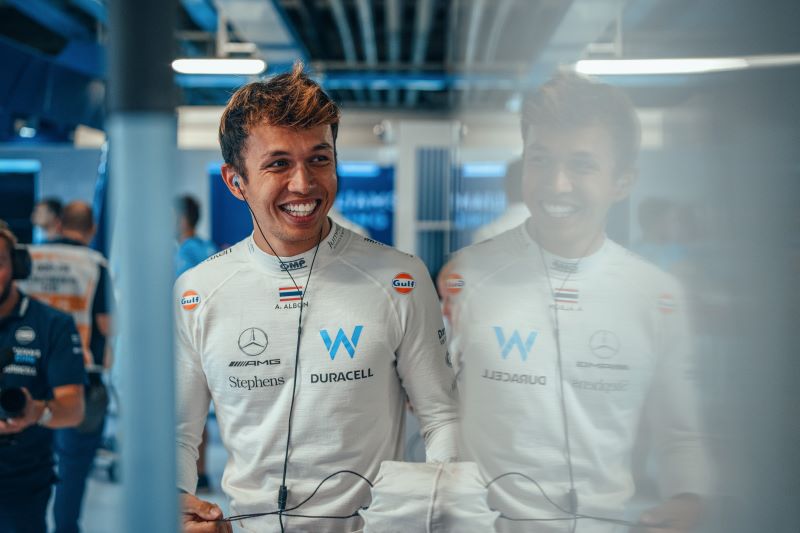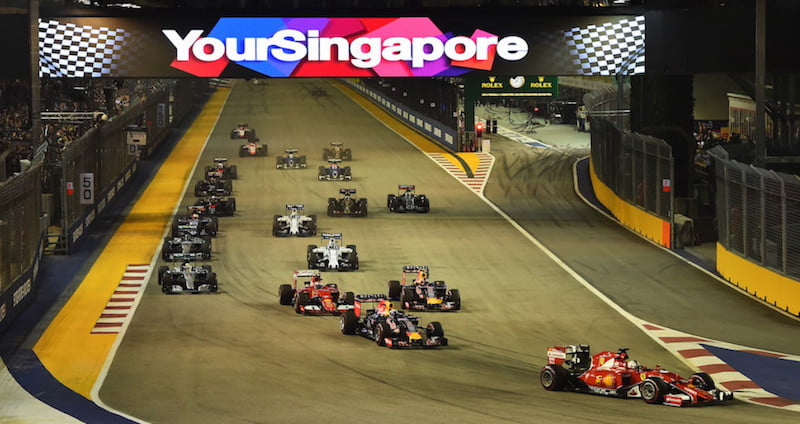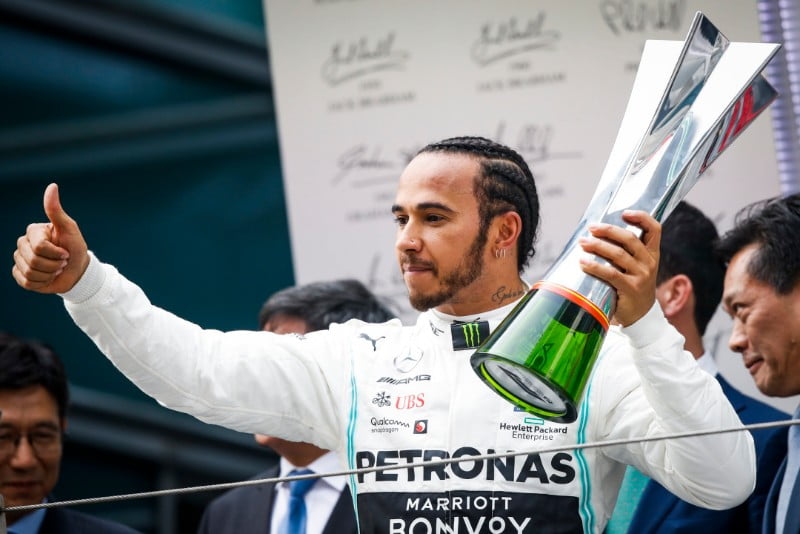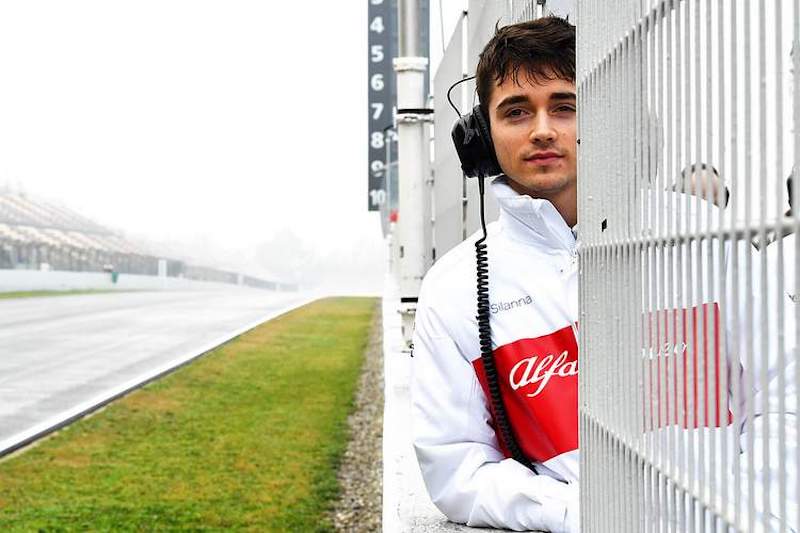2023 Italian Grand Prix
Budding Formula 1 tech-journalist Ashwin Issac pens his ‘F1 Midfield Tales’ from Monza, the venue of the 2023 Italian Grand Prix. ‘F1 Midfield Tales’ will be a combination of data and analysis that will aim to dissect the uber-competitive F1 midfield race-after-race.
Preface for the F1 midfield in Monza
‘Benvenuto in Italia’. Welcome to Italy, for us petrolheads, the land of Ferrari, for others the land of Pizza and Pasta. However you associate it, it is a place we all want to visit once in our lifetime.
For the Formula 1 Pirelli Gran Premio D’Italia 2023, we return to a track that is etched deeply into the history books of motor racing. ‘The Temple of Speed’ is the oldest track in mainland Europe and has been part of the championship since 1949.
The Autodromo Nazionale di Monza, or just Monza is a race track located near the city of Monza, North of Milan, in Italy. The current iteration of the track consists of corners and chicanes that evoke a sense of awe in any motorsport fan. The motorsport complex has been active for 101 years and has held the second most Formula 1 races.
It is a high-speed track where the straights and curves are separated by chicanes. The nature of this circuit forces the teams to opt for a very low downforce setup, we will witness the narrowest of rear wings over the weekend. This is also a track where overtaking is possible and the effect of a slipstream is magnified. Here’s the track map to complete the picture:
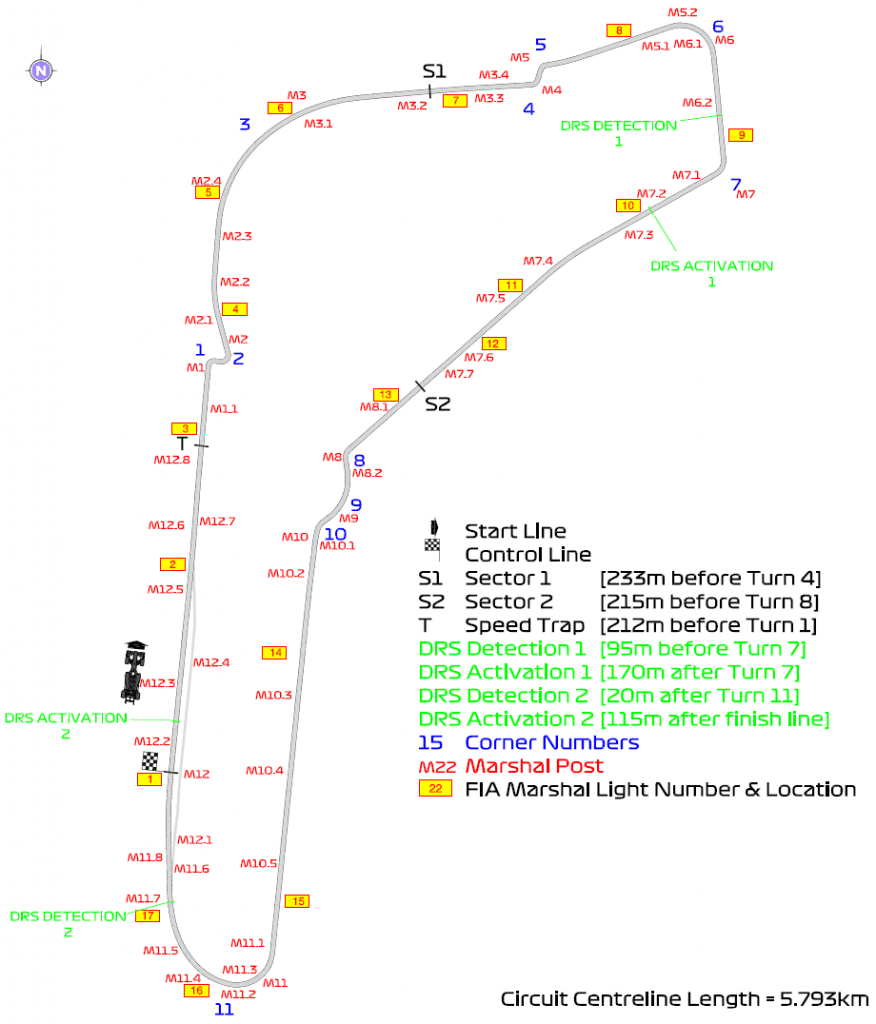
There were no changes made to the track and Pirelli offered the softest range of tyres, C3, C4 and C5. Formula 1 trialled the format of assigning mandatory tyres for each segment of the qualifying session for the second time this season. The drivers were mandated to run hard tyres in Q1, medium tyres in Q2 and soft tyres in Q3. This format also restricted the teams to 11 sets of dry tyres for the weekend, two less than the regular allocation.
With the foundations set for the weekend let’s ponder how the weekend revealed itself for the midfield teams.
Observations from the F1 midfield in Monza
For the first in what seemed to be a very long time the rain stayed away and stable weather was presented to the teams and driver at Monza.
With the alternate tyre allocations employed teams were very strategic in their use of tyres for the practice sessions. There were no major hindrances in the first session but an untimely visit to the gravel trap at Parabolica by Sergio Perez halted some of the long runs in the second session.
The track temperatures were about 36 – 37° C, a good precursor to the qualifying sessions and race day.
Qualifying battle between the F1 midfield in Monza
As mentioned above, Q1 of the qualifying session had a mandate for hard tyres. All the midfield teams used two sets of tyres with Alpha Tauri pushing it to three sets.
The bar chart below depicts the performances of all the drivers in the midfield:
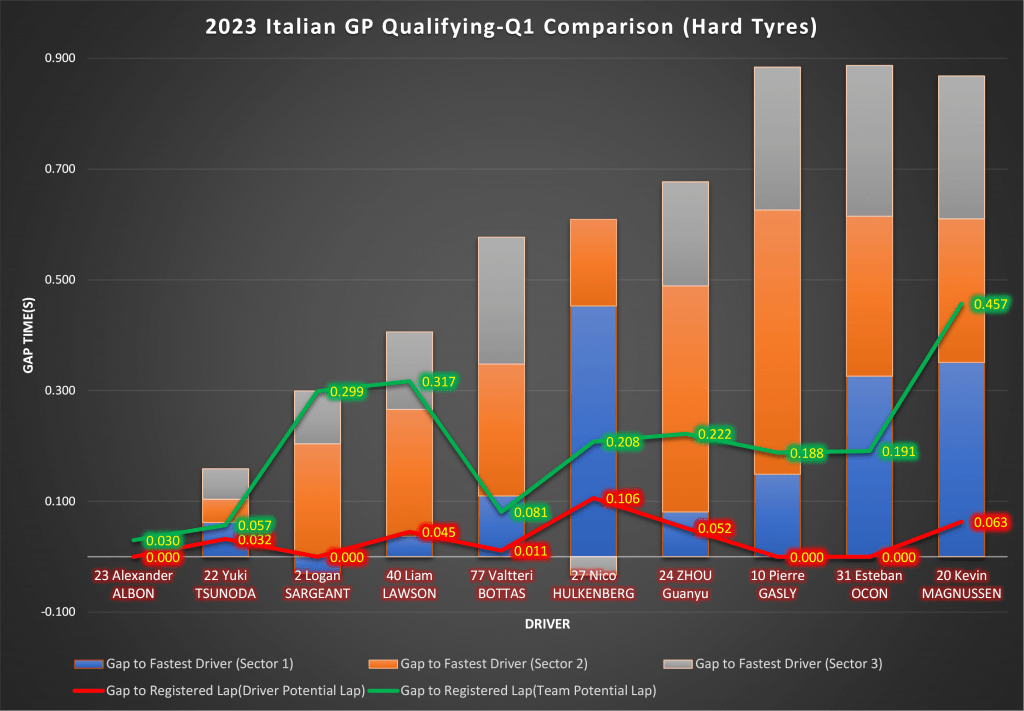
- A lot was expected from the Williams team because of their car’s characteristics. Albon started to match some of those expectations from the get-go.
- Alpha Tauri were the second-fastest team over a single lap. Liam Lawson impressed everyone by being close to Tsunoda’s heels.
- Alfa Romeo and Haas had similar pace when we only consider Hulkenberg’s efforts.
- Overall, Alpine was the slowest team. The lack of grunt offered by their engine added by the inefficiency of their car’s aerodynamics kept them from making an impression on the timing sheets.
Six of the midfield drivers progressed to Q2. In this segment, on the medium tyres the pattern in pace differential was similar. Here’s a bar chart deciphering their performances:
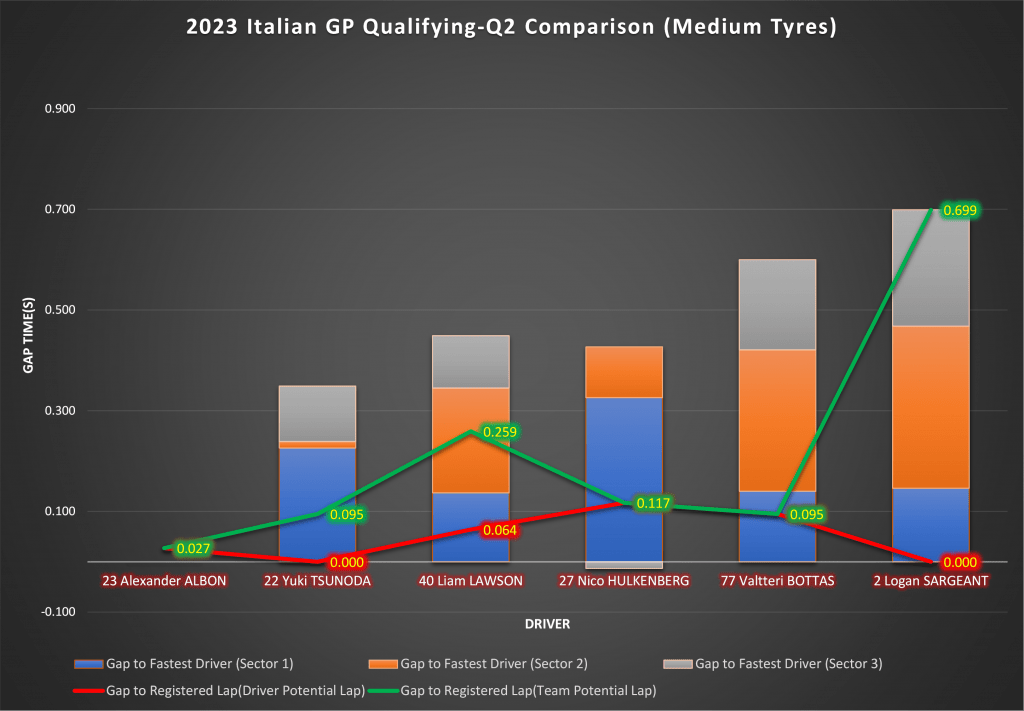
- Albon was in his own league among the midfield pilots, The Williams had genuine speed but their rookie driver didn’t capitalise on the opportunity. He claimed he failed to switch on the tyres and it was the reason why he was eliminated and had a deficit of seven tenths.
- Alpha Tauri were again the second-fastest team with Yuki Tsunoda narrowly missing out on Q3.
- Haas was on the heels of Alpha Tauri in this segment with Hulkenberg edging past Valtteri Bottas.
Only Alexander Albon progressed to Q3 and eventually qualified an impressive P6.
The Race between the F1 midfield in Monza
Monza offered the hottest temperature of the weekend on race day with the track temperatures reaching 43°C. The race start was aborted when Yuki Tsunoda’s Alpha Tauri suffered an engine failure in the formation lap, in order to recover the stranded vehicle two more formation laps were run with one of them counting against the total number of laps.
Except for Bottas and Magnussen, every midfield driver opted to start the race on the medium tyres. With the softest range of tyres and with the scorching heat, one would assume that it is an easy two-stop race but the top teams and few drivers in the midfield opted for a one-stop race as the time lost in the pits on this track was significant compared to the pace gained on fresh sets of tyres.
The drivers who opted for a one-stop did benefit them in terms of track position with Bottas’s alternate strategy gaining him some places to earn an all-important point. The two stoppers went with a medium to hard to medium strategy with the outlier of Magnussen who started on the hard tyres.
The drivers of the midfield were plagued by the ‘DRS Train’ and thus posted similar times on the time sheet. When it was evident that an overtake was increasingly becoming impossible some tried to undercut their opponents by pitting an extra time, but their opponents covered them off with a pitstop of their own.
It is still important to see how Albon fared against the other midfield drivers highlighting the ‘DRS Train’ effect, the line chart below gives us a picture:
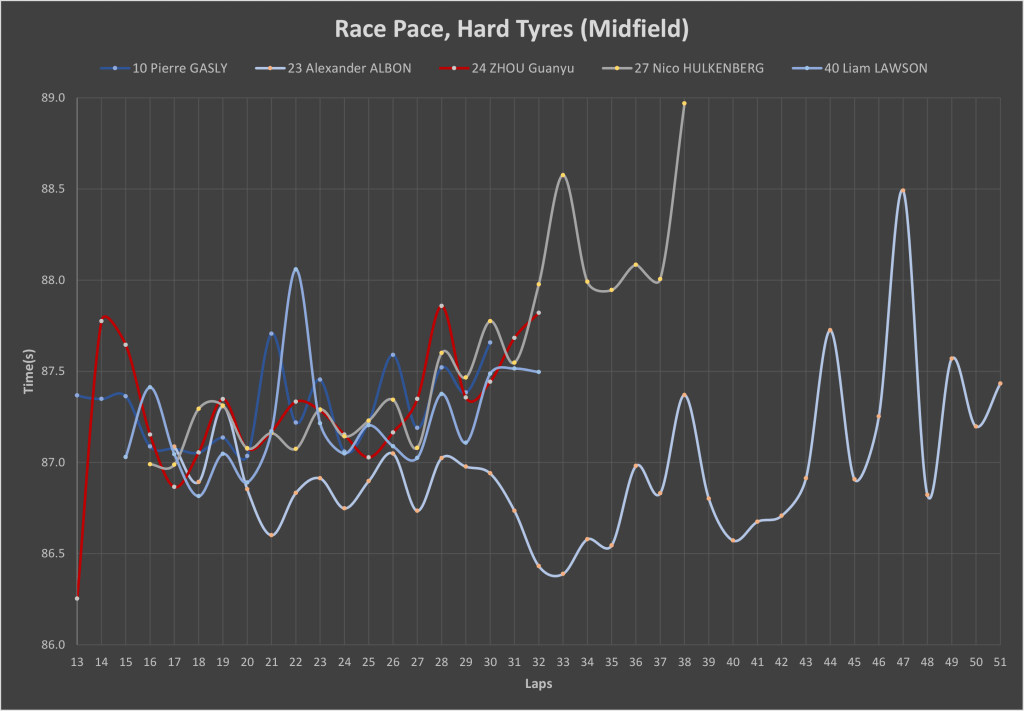
- Albon in clean air was evidently faster.
- All the other teams registered very similar times.
- When Hulkenberg tried to extend his stint, the tormenting wear rate of the Haas restricted him from making any inroads in track positions.
Conclusion from the F1 midfield in Monza
The broadcast was only focused on what happened upfront and it is understandable as all the entertainment was provided by the top teams.
The midfield failed to make any impression on the directors as there was nothing noteworthy offered. ‘DRS train’ is to be blamed. The low downforce setup didn’t offer any pace differential for on-track overtakes to take place.
The 2-stop strategy gamble failed to make a difference because of the loss suffered in the pits and the low degradation nature of the circuit.
As the Tifosi didn’t really get what they hoped for in terms of the race result, the midfield observers were also left disappointed. The Tifosi did find something to cheer about in the end with the battle of the Ferrari teammates and like them, the silver lining among the midfield this weekend was the magnificent performance of Alexander Albon.
This marks the end of the European leg of this year’s championship. In two weeks’ time, the Formula 1 paddock will assemble in the demanding streets of Singapore where the downforce demand will literally be reversed. Let’s be patient until then.
